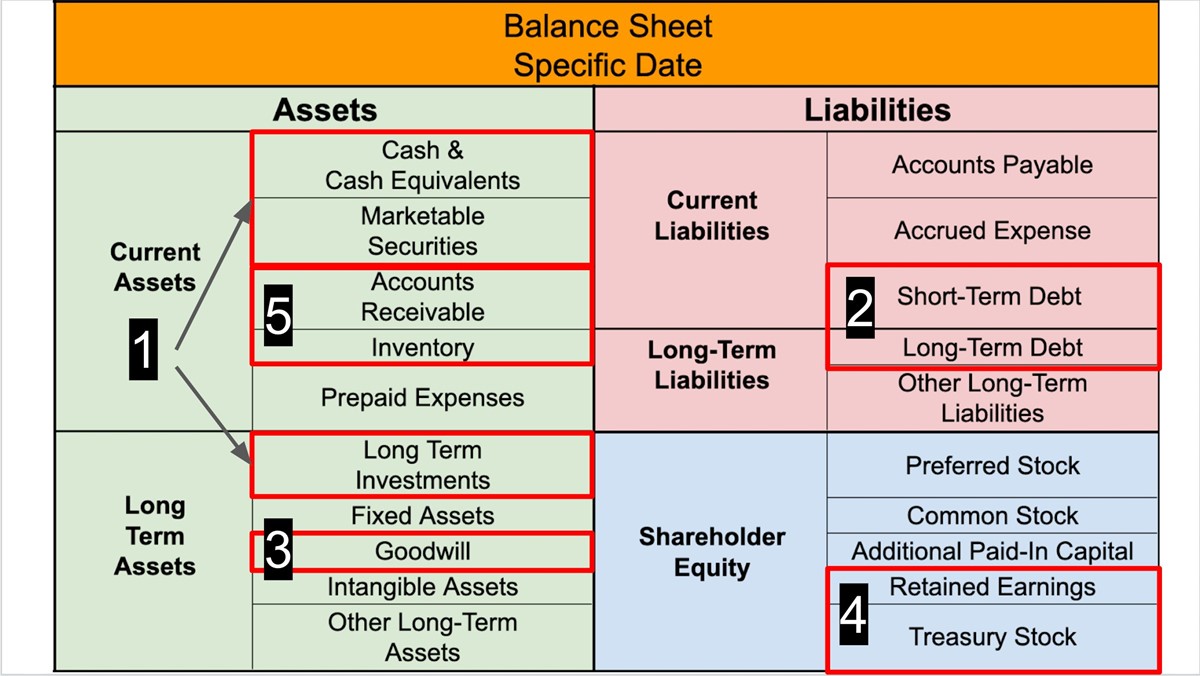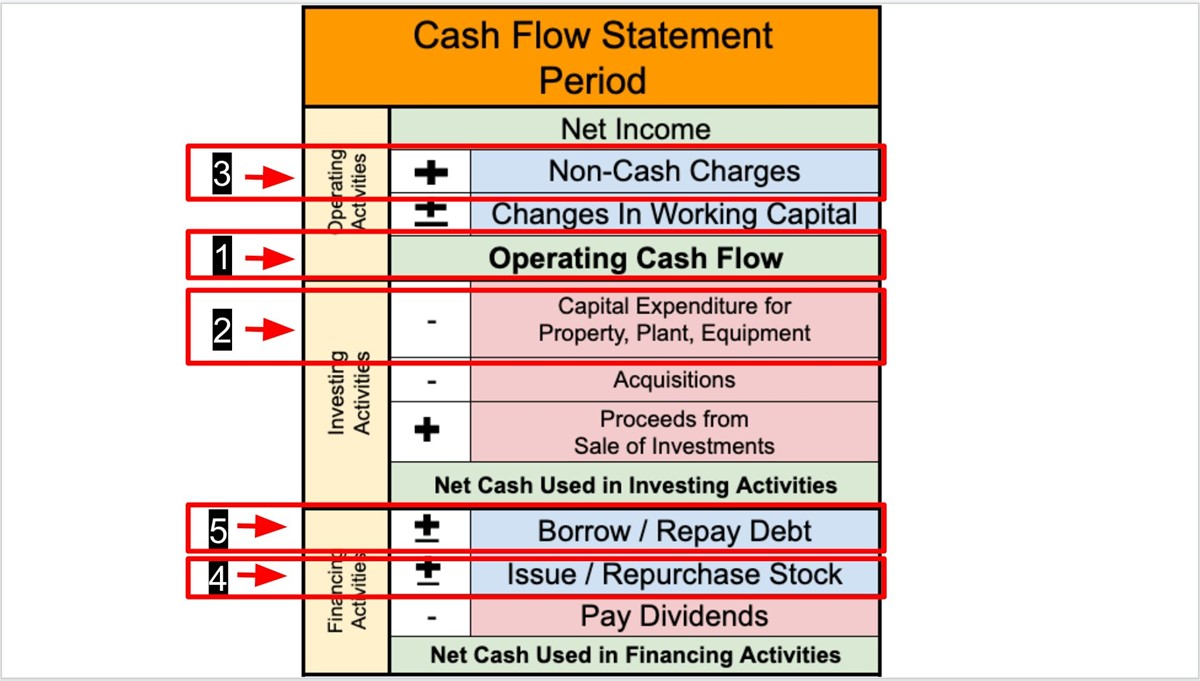The financial statements are interrelated.
Each views a company's financials from a different angle.
When combined, they provide a more complete view of a company's true financial position.

Each answers a unique question:
1. Balance Sheet: What's your net worth?
2. Income Statement: Are you profitable?
3. Cash Flow Statement: Are you generating cash?
资产负债表
This tells you a company's net worth at a specific point in time.

What I focus on first:
1,Cash & Equivalents: How much?
2,Debt: How much vs. cash?
3,Goodwill: How much?
4,Retained Earnings (+ T.S.): Positive?
5,Receivables & Inventory: How much?

Best Possible Answers
1,Cash & Equivalents: More than debt
2,Short & Long-Debt: None
3,Goodwill: Zero
4,Retained Earnings (+ T.S.): Positive
5,Receivables & Inventory: None
利润表
This tells you if a company is "profitable" or not during a period of time

I look at 2 income statements with comparable periods.
What I focus on first:
1,Revenue: Up or down?
2,Gross Profit: Up or down?
3,EPS (Diluted): Positive or negative?
4,Shares Outstanding: Up or down?
5,Operating Expenses: Up or down?

Best Possible Answers
- Revenue: Up 30%+
- Gross Profit: Up 30%+
- EPS: Up 30%+
- Shares Outstanding: Down 4%+
- Operating Expenses: Stable
现金流量
This tells you how cash moves in and out of a business over a period of time.

What I focus on first:
1,OCF: Positive or negative?
2,CapEx: More or less than OCF?
3,NCC: Any big numbers? S.B.C.?
4,Stock: Issuance or buybacks?
5,Debt: Borrow or repay?

Best possible answers
1,OCF: Positive (+ Growing)
2,CapEx: Much less than OCF
3,NCC: Nothing noteworthy + Low SBC
4,Stock: Buybacks ✅
5,Debt: Repayment✅